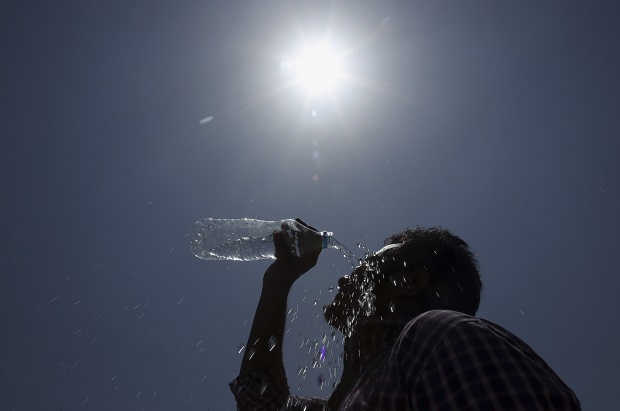PH cities suffer ‘dangerous’ weekend heat

FILE – Pagasa station in Cabanatuan, Nueva Ecija recored a heat index of 47.8°C at 2 p.m. on Sunday, The station at Sangley Point, Cavite also documented a heat index of 46.1°C, and the station in Zamboanga City, Zamboanga del Sur also registered a heat index of 42.2°C at the same time. AP Photo
It was hardly a chill Sunday for some cities, as the highest heat indices nationwide was recorded for the month so far.
The Philippine Atmospheric Geophysical and Astronomical Services Administration (Pagasa) station in Cabanatuan, Nueva Ecija registered a heat index of 47.8°C at 2 p.m. on Sunday, The station at Sangley Point, Cavite also documented a heat index of 46.1°C, and the station in Zamboanga City, Zamboanga del Sur also registered a heat index of 42.2°C at the same time.
Other Pagasa stations that monitored heat indices reaching 40°C on Sunday were in Ambulong, Batangas; Cotabato City, Maguindanao; Davao City, Davao Del Sur; General Santos City, South Cotabato; and San Jose City, Occidental Mindoro, mostly from noontime until 5 p.m.
The heat index, called “init factor” colloquially, is the “apparent temperature” felt by the human body rather than the ambient air temperature. It is determined by factoring in the air temperature and the relative humidity.
A heat index of 41 to 54°C is already categorized as “dangerous,” wherein heat cramps and heat exhaustion are likely; and heat stroke is probable with continued activity. A heat index of 32°C to 41°C already calls for “extreme caution” for the same reason.
Article continues after this advertisementIn an interview, Pagasa weather specialist Meliton Guzman noted that of more than 71 stations nationwide that have been monitoring the heat index since the start of March, the stations that recorded the highest heat indices were usually located in cities.
Article continues after this advertisementFor the coming week, the heat index forecast sees the highest heat indices in Zamboanga City, Subic Bay, and Metro Davao, to reach around 36.7°C to 37.1°C. The actual heat indices, however, may turn out higher, as they did last week, as the forecast is only based largely on average heat indices in the respective areas over the past 30 years.
On Monday, the highest heat index registered as of 2 p.m. was 43.9°C in Vigan.
Earlier, Pagasa said the heat being experienced in some parts of the country was caused by the easterlies, or winds coming from the Pacific. Guzman said they usually start monitoring the heat index starting March, until around June or the start of the rainy season.
Based on the monitored heat index last year, the worst is usually experienced in April or May, at the height of the summer season. The highest heat index was documented last year on May 6, in Dagupan City, Pangasinan, which reached 55°C. Cabanatuan, Nueva Ecija and Sangley Point, Cavite likewise registered heat indices reaching 50°C or higher throughout April until early June last year.
Summer has yet to be declared by the Pagasa, due to the northeast monsoon still affecting northern Luzon.